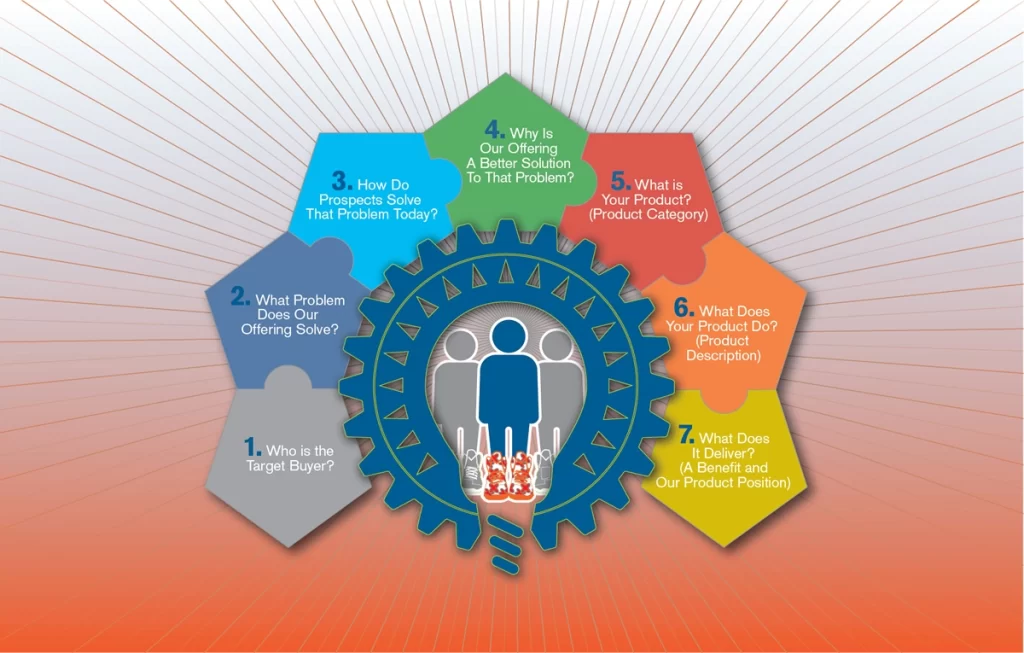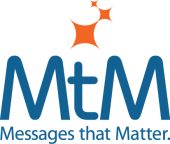In this article, I present a proven framework for creating the ideal positioning statement for your B2B product.
All you do is answer seven questions outlined below, and test options using a set of criteria to determine the positioning statement that best makes your product stand out from the competition.
A positioning statement is a short, declarative sentence that expresses a benefit that solves a pressing target audience problem. It becomes the theme for all your marketing communications so getting it right is critical.
Here are positioning statement examples:
- Microsoft® Forecaster is the fast, affordable way for you to gain control of budgeting and planning.
- Kit Software helps maximize the value to your commodity trading operations.
- Messages that Matter works with you to create a position that makes it easier for buyers to buy.

You’ll be able to answer the seven questions with confidence by doing your research. You’re ready to get started once you know your target audience’s most pressing problems, how your competitors are positioned and challenges in the sales cycle.
START BY ANSWERING FOUR FUNDAMENTAL QUESTIONS
The process begins by analyzing how prospects might respond to your offering. The answers to four fundamental questions provide this analysis.
1. Who is the target buyer?
Your channel (how you sell either direct or through partners) has provided the input you needed early in the research to create a short list of potential target buyers. If there was a debate, you may have received additional feedback from customers and internal stakeholders. By now there should be no doubt about who’s the target for your positioning statement such the IT director, CFO, VP of sales, HR director, etc.
You’ll answer the rest of the questions from the perspective of the No. 1 target buyer you’ve selected. Remember a tie for the No. 1 spot will muddle the rest of your positioning effort.
2.What problem does our offering solve?
You can’t successfully position your offering unless you know the answer to this basic question: “What is my target prospect’s most pressing problem?” Notice that this question asks about THE problem, not problems. Although it may be tempting to think of your offering as a Swiss Army Knife, don’t, because it’s doomed to fail.
3. How do prospects solve that problem today?
If your offering solves a bona fide problem, then customers already have a solution. You need to know how they currently solve the problem.
4. Why is our offering a better solution to that problem?
Your goal is to position your offering as a better solution to an existing problem. Remember that cutting edge technology often fails to provide a better solution for more than a small fraction of a target market. Admitting to this requires honesty.
THE THREE “WHAT” QUESTIONS
Using your knowledge of the prospect’s key problem and your product’s ability to respond to that problem, you can categorize your offering. Categorization enables potential buyers to quickly understand how they might benefit from your offering. The following “what” questions help you converge on a potential positioning statement:
5. What is your product? (Product category)
B2B prospects need to recognize your product category, otherwise confusion reigns. Ideally, you can place your product into an existing category or one that represents a natural evolution.
Most people find it difficult to understand new categories without assistance. If you attempt to define a new category, expect to spend a lot of money. And you still run the risk of getting out ahead of the market. When this happens, you become a missionary not just for your product but the category. Sales cycles are sure to extend well beyond the norm, and late-arrival competitors may reap the harvest of your hard work.
6. What does your product do? (product description)
A short description of your product’s functionality can help prospects imagine how people in their organizations might use the product. But a description alone won’t get to the heart of the matter.
For example, a vendor of word processing software might claim that its product creates great looking documents in minutes. Although such a statement might seem to express a benefit of word processing software, it merely describes what it does – an advantage over other ways of producing documents.
7. What does it deliver? (a benefit and our product position)
Marketers frequently make a critical error by confusing what a product or solution does with what it delivers. Naturally, prospects need to know the advantages of your offering. But they won’t purchase until they can understand the benefits. Why make prospects figure it out for themselves? Make it short, simple and sweet — by telling them in your positioning statement.
THE FOUR CRITERIA
After working through the framework described above, you will have developed several potential positioning statements. At this stage, four criteria can help you assess the viability of the various statements. For each statement, ask if it is:
- Important
- Believable
- Unique
- Useable
This assessment helps you identify the positioning statement that will best stimulate market awareness and demand. Let’s consider these criteria in more detail.
Important
A positioning statement must respond to a prospect’s primary problem. By doing so, the statement creates confidence in your ability to offer a desirable solution, as well as a sense of urgency in the prospect’s mind.
You can test the importance of a potential positioning statement by asking a simple question “So what?” If the answer produces a higher-level benefit statement, you haven’t yet found the most important benefit.
If you continue asking “so what?” you will ultimately arrive at one of three benefits. For business-to-business offerings, these are volume, share and profit. Since these benefits may not be believable, drop back to the answer to the previous “So what?” question.
Believable
An effective positioning statement recognize prospects inherent skepticism by avoiding exaggerated or meaningless claims. Effective communications “ring true” by referencing existing market conditions; they support your company’s brand identity and signal that you understand the prospect’s concerns.
Unique
Positioning always occurs in a competitive environment. Therefore, a positioning statement must state a benefit made by no other company. When you make a unique claim, two results occur. First, you raise a significant barrier to competition. Second, you increase the desirability of your offering. These two outcomes can significantly impact sales volume, market share, and profitability.
Usable
A positioning statement provides a foundation for changing market behavior through marketing communications (e.g., advertising, web site, public relations, direct marketing). Therefore you need to be able to use it in all types of marketing communications and sales presentations. You can create sample marketing materials (press release, e-mail blast, web site content, etc.) to test for usability.
Summary:
Once you have answered the seven questions, and come up with several positioning statement options, use the four criteria to decide the best option. The winner is a positioning statement that is unique, useable, believable and important – it expresses a benefit that solves one of the target buyer’s most pressing problems.
